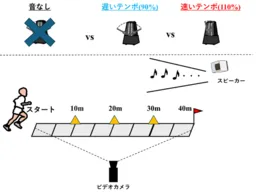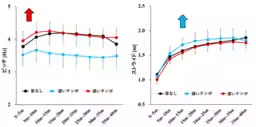

How Auditory Cues Enhance Sprint Running Efficiency
Exploring the Impact of Auditory Guidance on Sprint Running
In the ever-evolving field of sports science, a groundbreaking study conducted by Waseda University has shed light on the application of auditory cues, particularly metronomes, in enhancing sprinting performance among adolescent athletes. This innovative approach aims to address the intricacies of running mechanics, specifically focusing on the interplay between pitch and stride during high-speed sprints.
The research emphasized a notable gap in existing studies, which primarily concentrated on how auditory guidance influences slower-paced running, such as jogging and long-distance running. Until now, the effects of auditory cues during sprinting — a significantly faster and more complex movement — had not been thoroughly investigated. Led by PhD candidate Shinnoosuke Hase, alongside faculty members Kento Nakagawa and Shigeo Iso from Waseda University's Graduate School of Sport Sciences, the team embarked on an exploration aimed at quantifying these effects.
Key Findings from the Research
Utilizing a metronome set to varying tempos, the researchers aimed to modulate the natural running dynamics of junior high school students during their sprints. The study successfully identified that a slower metronome tempo, set at 90%, led to an increase in stride length but a decrease in pitch, whereas a faster tempo at 110% resulted in reduced stride length but increased pitch. This interaction between pitch and stride is crucial, with the findings indicating that both can be manipulated to enhance overall sprinting velocity.
The video analysis conducted during the study measured various parameters of sprint running, including pitch, stride, and speed, further substantiating the significance of auditory cues in refining running mechanics. One of the distinctive aspects of this research is its potential application in coaching, allowing coaches to integrate auditory guidance as a non-verbal tool for skill enhancement.
Historical Context and Advances in Coaching
Historically, coaching in sports has relied heavily on verbal instructions and feedback. However, the effectiveness of such communication is often mitigated by factors like an athlete's skill level and comprehension. This research emphasizes the need for non-verbal coaching aids, such as music or metronomes, which can transcend language barriers and cater to diverse age groups and skill levels.
Prior studies indicated that auditory cues positively impacted running cadence in slower-paced scenarios, yet the direct correlations in sprinting remained unexplored. The current study fills this research void, paving the way for the development of effective training techniques specifically catered to sprinting.
Broader Implications for Sports and Fitness
The implications of these findings extend beyond competitive athletics, resonating within the health and fitness sectors, where training methodologies can benefit from innovations in auditory guidance. The non-verbal nature of auditory cues allows for versatility across various demographics, suggesting a broader outreach for these coaching techniques.
This study's authors express optimism about its ramifications; with the ability to improve individual sprint mechanics, they foresee significant advancements in teaching strategies within track and field disciplines.
Future Research Directions
Despite the promising conclusions, the study also noted challenges in participant performance, particularly as athletes focused on synchronizing their sprinting with metronome cues. The team advocates for further exploration into optimal metronome tempo settings and refined testing environments, which could enhance practical training applications by verifying the speed effects in controlled settings, like treadmills.
Conclusion
In summary, this pioneering research offers valuable insights into how auditory guidance can influence sprint running performance. As researchers like Hase, Nakagawa, and Iso continue to investigate under various conditions, the hope is to establish new benchmarks in athletic training, potentially revolutionizing how sprinting techniques are taught and executed. In the rapidly advancing arena of sports science, this study represents a significant step towards integrating innovative coaching methods into practice.
Reference Information
- - Journal: PLOS One
- - Article Title: Effects of rhythmic auditory guide on sprint running
- - Authors: Shinnoosuke Hase, Kento Nakagawa, Shigeo Iso
- - Publication Date: March 21, 2025
- - DOI: 10.1371/journal.pone.0319738
This study highlights the evolving landscape of sports training, where auditory cues might become a staple tool for not just elite athletes, but anyone seeking to improve their running prowess.


Topics Sports)










【About Using Articles】
You can freely use the title and article content by linking to the page where the article is posted.
※ Images cannot be used.
【About Links】
Links are free to use.